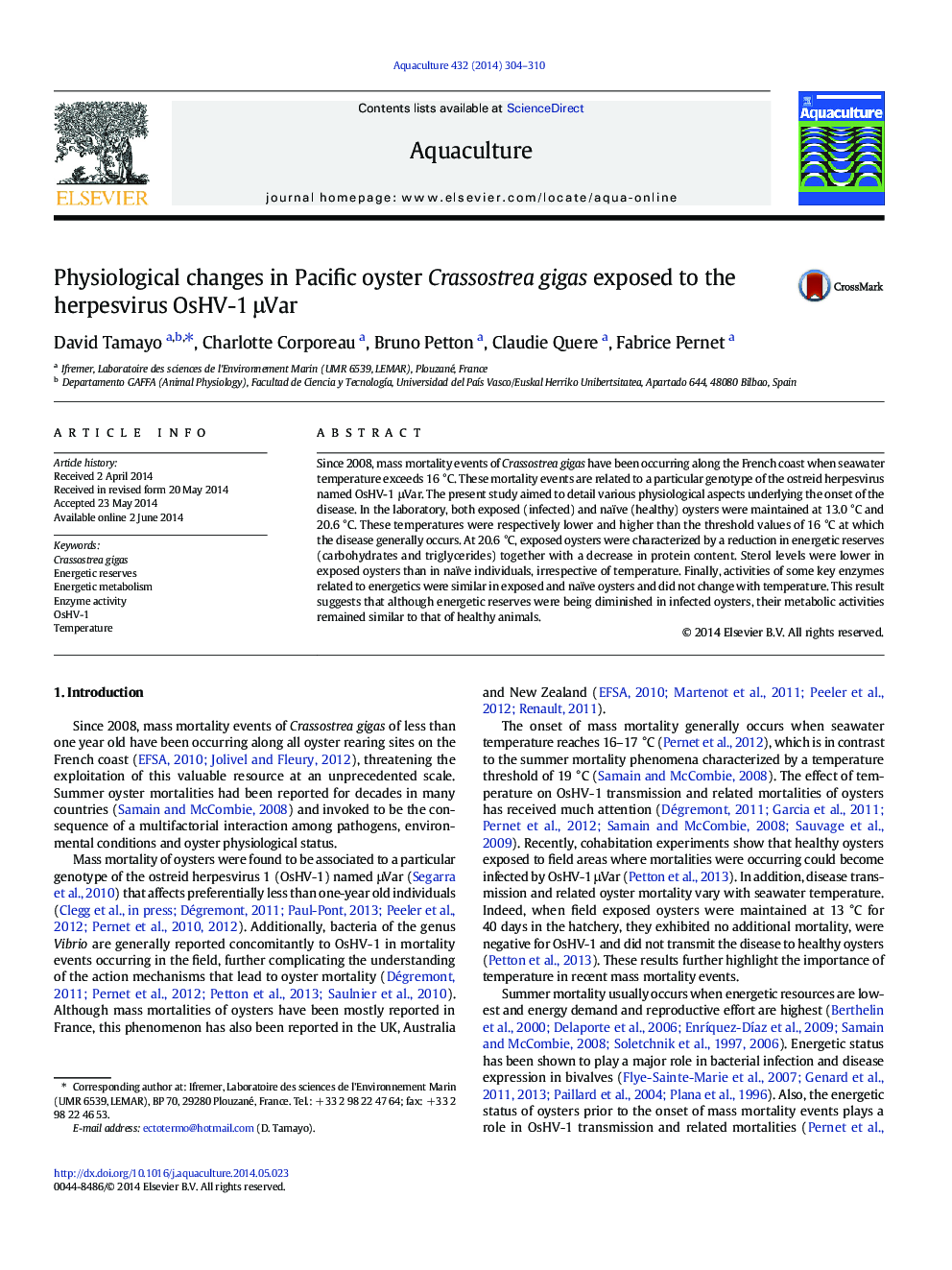| Article ID | Journal | Published Year | Pages | File Type |
|---|---|---|---|---|
| 2421804 | Aquaculture | 2014 | 7 Pages |
•We study the energetic physiology of infected and healthy oysters at 2 temperatures.•Healthy oysters increase their energetic reserves together with higher temperatures.•Infection and high temperatures lead to mortalities and lowered energetic reserves.•Infected and healthy oysters have similar key energetic enzyme activities.•OsHV-1 μvar promotes a metabolic disorder above its lethal temperature threshold.
Since 2008, mass mortality events of Crassostrea gigas have been occurring along the French coast when seawater temperature exceeds 16 °C. These mortality events are related to a particular genotype of the ostreid herpesvirus named OsHV-1 μVar. The present study aimed to detail various physiological aspects underlying the onset of the disease. In the laboratory, both exposed (infected) and naïve (healthy) oysters were maintained at 13.0 °C and 20.6 °C. These temperatures were respectively lower and higher than the threshold values of 16 °C at which the disease generally occurs. At 20.6 °C, exposed oysters were characterized by a reduction in energetic reserves (carbohydrates and triglycerides) together with a decrease in protein content. Sterol levels were lower in exposed oysters than in naïve individuals, irrespective of temperature. Finally, activities of some key enzymes related to energetics were similar in exposed and naïve oysters and did not change with temperature. This result suggests that although energetic reserves were being diminished in infected oysters, their metabolic activities remained similar to that of healthy animals.
